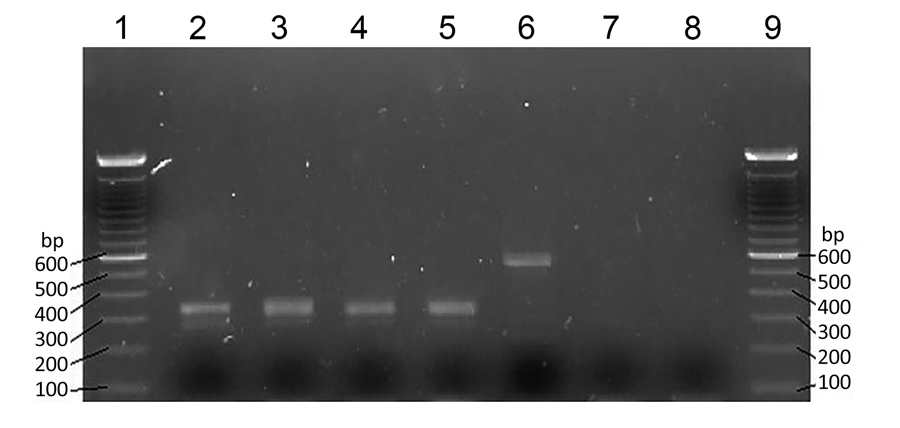Volume 25, Number 11—November 2019
Dispatch
High Prevalence of Mansonella ozzardi Infection in the Amazon Region, Ecuador
Figure 2

Figure 2. Nested PCR amplification products for Mansonella ozzardi microfilariae obtained from archived human samples in the Amazon region of Ecuador. Samples were subjected to electrophoresis on a 2% agarose gel. Lanes 1 and 9, 100-bp molecular mass ladders; lanes 2, 3, 4, and 5, M. ozzardi nematode-positive samples (sample nos. 14, 53, 27, and 25, respectively) that yielded a 305-bp fragment; lane 6, Toxocara canis roundworm (610-bp fragment); lane 7, M. ozzardi nematode–negative thick blood smear; lane 8, negative control. These PCR results confirmed data obtained by microscopy. Morphologic characteristics of and DNA findings for the microfilariae indicated that this parasite was an M. ozzardi nematode.
Page created: October 15, 2019
Page updated: October 15, 2019
Page reviewed: October 15, 2019
The conclusions, findings, and opinions expressed by authors contributing to this journal do not necessarily reflect the official position of the U.S. Department of Health and Human Services, the Public Health Service, the Centers for Disease Control and Prevention, or the authors' affiliated institutions. Use of trade names is for identification only and does not imply endorsement by any of the groups named above.